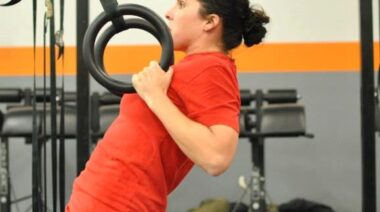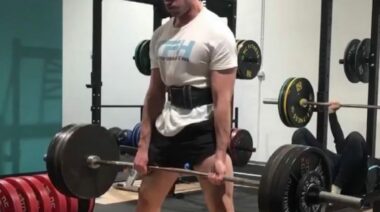Speed and power are essential components needed to succeed in many sports. Consequently, athletes are constantly implementing programs to improve specific aspects of strength and power. Eccentric and over-speed training modules have been used to increase performance. A recent study published in the Journal of Strength and Conditioning Research compared the effects of traditional or eccentric training with volume-matched training that incorporated over-speed exercises.
The study consisted of 20 semi-pro athletes who were divided into 4 groups and performed 4 different training systems:
- Traditional resistance training alone, where both concentric and eccentric actions were performed with the loading during the concentric phase.
- Eccentric training alone.
- Traditional concentric training combined with over-speed exercises.
- Eccentric training combined with over-speed exercises.
Subjects were tested on 2 consecutive days to determine initial strength, power, and speed. Strength was testing using the back squat, power was measured from their performance on unloaded counter-movement jumps, and speed was measured from 40 meter sprints.1
The study lasted 12 weeks, and each group performed each of the 4 training systems during 3 week training blocks that involved 10 treatment sessions, and 2 testing sessions. The researched targeted changes in areas of strength, counter-movement jump peak power, and 40 meter max running speed. The over-speed exercises performed were assisted counter-movement jumps and downhill running.2
Following the 12 week training period, the data revealed there were improvements in bench press, squat, and peak power in the counter-movement jump. Larger strength increases were noticed as a result of the eccentric training block. Eccentric training with over-speed stimuli proved to be more effective than traditional resistance training in terms of increasing peak power in the counter-movement jump. Eccentric training did not result in any improvement in max running speed, however, the addition of over-speed exercises significantly helped when compared to eccentric training alone.3
In conclusion, this study suggests that eccentric training was more effective than traditional resistance in increasing both upper and lower body strength. The eccentric training block also resulted in greater improvements in counter-movement jump peak power when compared to traditional training. While eccentric training alone may not be effective for increasing speed, the incorporation of over-speed exercises (replacing counter-movement jumps and flat plane sprints with assisted jumps and downhill running) resulted in a transference of strength into max running speed. This study proved that short-term training blocks of eccentric training with an over-speed component can be used to improve lower-body strength, power, and running speed.4
Photo courtesy of Shutterstock.






